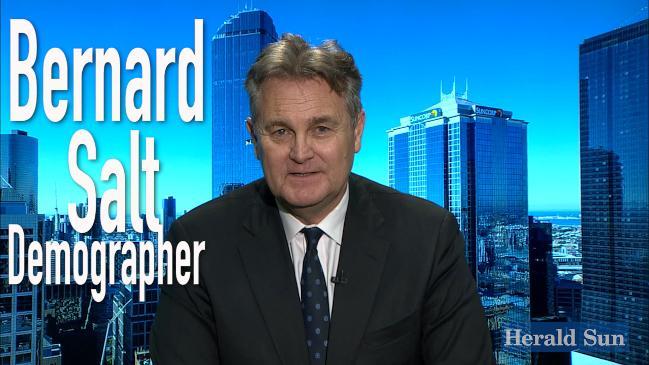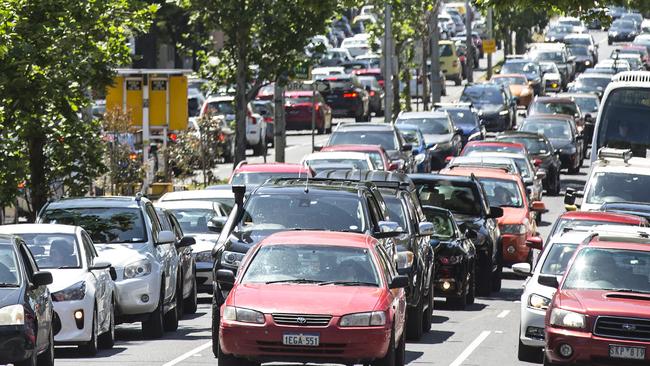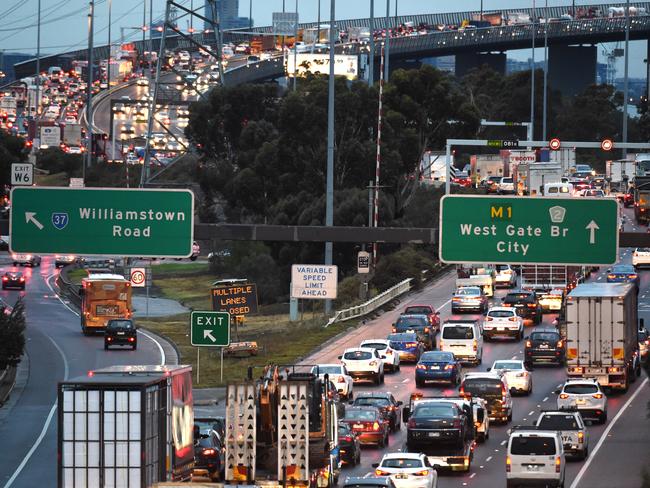Infrastructure Victoria modelling reveals car will reign supreme as population grows
IF you thought traffic in Melbourne couldn’t get any worse, think again. This is how our commute will look in 14 years, according to research by Victoria’s infrastructure watchdog.

VIC News
Don't miss out on the headlines from VIC News. Followed categories will be added to My News.
NEARLY one-fifth of Melbourne’s roads will slow down under heavy traffic by 2031, according to new research by Victoria’s infrastructure watchdog.
Infrastructure Victoria’s Managing Transport Demand report has forecast that 19.2 per cent of Greater Melbourne’s road network will be at high capacity in 14 years, up from the current level of 15.8 per cent.
THE TECH TO STOP MASS PEDESTRIAN CASUALTIES
HOW MUCH OUR NIGHTMARE TRAFFIC IS COSTING YOU
MAJOR UPGRADES TO CAUSE MELBOURNE TRAVEL PAIN
According to the modelling, about 1070km of busy roads will be at 70 per cent capacity by the end of the next decade, the benchmark for when motorists will notice slower travel times and heavier congestion.
The report, produced with KPMG, considers Victoria’s infrastructure pipeline and assesses the impact the projects will have on the state’s transport network.

Infrastructure Victoria CEO Michael Masson said major projects would benefit Melbourne’s booming population but strong growth would still put pressure on journey times.
“We can see very clearly that roads will become busier in the future with an additional 3.5 million trips daily across the network,” he said.
“What we did notice is that the significant level of investment taking place right now on planned roads and public transport is likely to partly absorb the increased demand.
“Looking forward, we need to look at how we make the most of the existing assets and we need look at demand management.

“More can be done to leverage the technology of transport-management systems and it would be helpful to share more of this sort of information across the network.”
Public transport patronage is expected to surge by 75 per cent but cars are still forecast to reign supreme in Melbourne, accounting for more than two-thirds of all trips in 2031. “We’re likely to depend on cars for quite some time,” Mr Masson said.
“About 15 per cent of all trips that take place in the morning peak are not related to work or education,” he added.
“We’re very interested in that because we now want to go and find out what would it take for these people to change their behaviour.
“If we could take between 5 per cent and 7 per cent of cars out of the morning peak, we would feel the same change as experienced during the school holiday season.”


